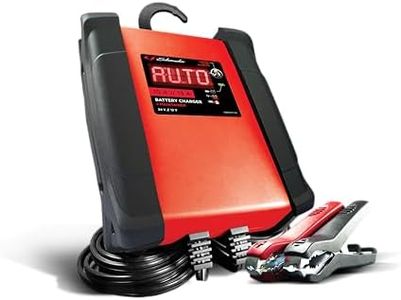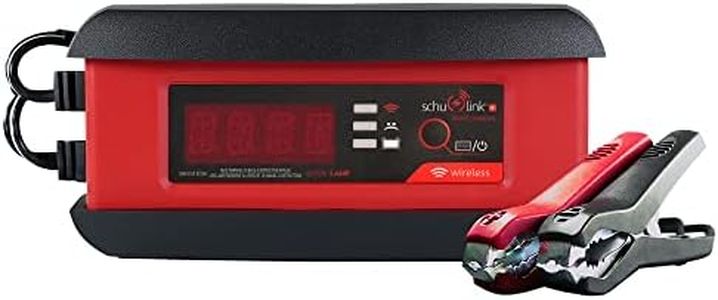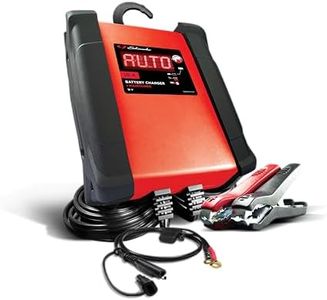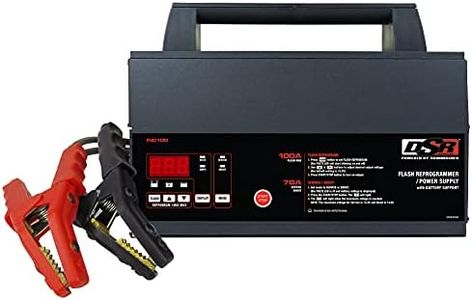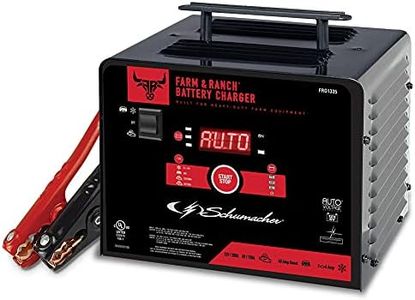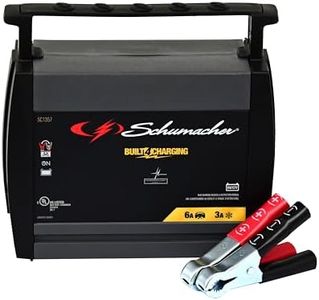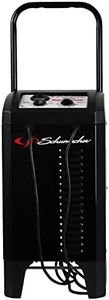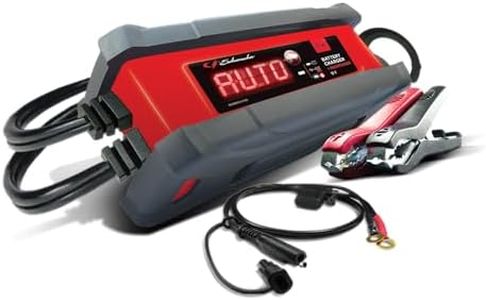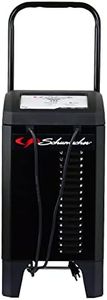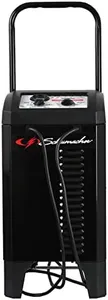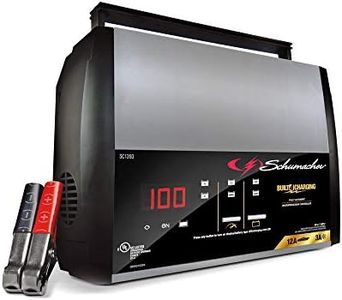We Use CookiesWe use cookies to enhance the security, performance,
functionality and for analytical and promotional activities. By continuing to browse this site you
are agreeing to our privacy policy
10 Best Schumacher Battery Chargers
From leading brands and best sellers available on the web.By clicking on a link to a third party's website, log data is shared with that third party.
Buying Guide for the Best Schumacher Battery Chargers
Choosing a battery charger, especially from a reputable brand, can make maintaining and reviving your vehicle's battery much easier and safer. It's important to match a charger to your specific needs—whether you're topping up occasionally, maintaining a battery over winter, or reviving a dead one. Focus on essential specifications to ensure you get a charger that’s both effective and safe for your particular type of battery and usage scenario.Charging Amperage (Current)Charging amperage is the amount of electrical current the charger provides to the battery at any given time. This matters because a higher amperage means your battery will charge faster, while lower amperage allows for gentler, slower charging, which is often better for long-term battery health. Light-duty chargers tend to offer 2–6 amps, making them suitable for motorcycles or maintaining car batteries, while medium chargers in the 10–20 amp range are good for regular car batteries, and heavy-duty options with 30 amps or more are best for larger vehicles or quick charges. Consider how quickly you want to charge and what kinds of batteries you’ll be working with—slower for maintenance, faster for recovery.
Voltage CompatibilityBattery chargers are built to match the voltage of the battery they are meant to charge, most commonly 6V or 12V for cars and motorcycles, though some support both. Using the wrong voltage can damage your battery or the charger. Always check the voltage of your vehicle's battery and choose a charger that matches. If you have a mix of vehicles (like classic cars, motorcycles, or lawn mowers), consider a model that can be switched between 6V and 12V.
Battery Type CompatibilityModern chargers often support multiple battery types, such as lead-acid (including flooded, AGM, gel cell), lithium-ion, or deep cycle. Each type charges with different requirements, so it’s vital to pick a charger compatible with your battery chemistry. If you’re only ever charging a typical car battery, most chargers suffice, but for RVs, boats, or specialized batteries, check the supported types. Mismatched chargers and batteries can lead to poor performance or even damage.
Automatic/Manual OperationSome chargers automatically adjust charging rate and shut off to prevent overcharging, while manual chargers require you to monitor and stop charging yourself. Automatic chargers are safer, more convenient, and better for everyday users, as they reduce the risk of battery damage. Manual chargers can give more control in special situations but require more experience and attention. If you want something easy and worry-free, go for an automatic charger.
Charging Modes (Trickle, Float, and Fast Charge)Charging modes determine how the charger delivers power—trickle mode is for slow, long-term charging and maintenance; float mode keeps a full battery topped up without overcharging; fast charge gives maximum power for a quick boost. Chargers with multiple modes are versatile, allowing you to use them for both quick charges and long-term storage. Think about whether you want to maintain a battery over winter, or often need to revive a dead battery quickly.
Safety FeaturesSafety features such as reverse polarity protection, short-circuit prevention, spark-proof connections, and automatic shut-off can prevent accidents or battery damage. These are especially helpful for beginners or anyone worried about making a mistake during charging. Look for models highlighting these protections if you’re new to battery maintenance or want extra peace of mind.
Portability and DesignBattery chargers range from small, lightweight models easy to move around, to larger, heavier units built for garage use. Portable chargers are convenient for storage and light usage, while bigger designs often offer more power and features for frequent or heavy-duty charging. Think about where and how you’ll use the charger—if you'll stash it in your trunk or use it at home.
